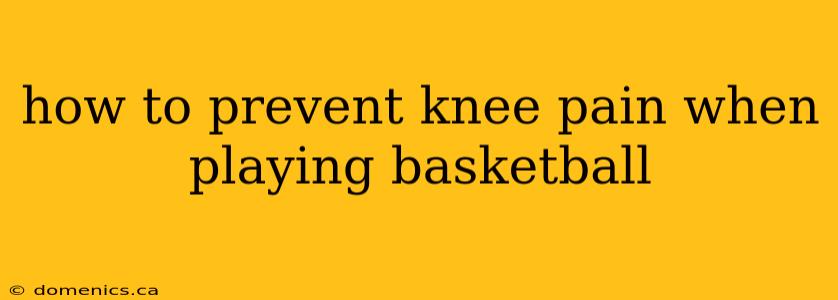Basketball is a high-impact sport that puts significant stress on your knees. Preventing knee pain is crucial for enjoying the game and maintaining a long-term playing career. This comprehensive guide will equip you with the knowledge and strategies to protect your knees on the court.
Understanding Knee Pain in Basketball
Knee pain in basketball often stems from overuse, improper technique, and inadequate conditioning. Common causes include:
- Meniscus Tears: These are cartilage tears often caused by twisting movements or sudden impacts.
- ACL/MCL Injuries: These ligament injuries result from forceful impacts or sudden changes in direction.
- Patellar Tendinitis: Inflammation of the tendon connecting the kneecap to the shinbone, usually due to overuse.
- Runner's Knee (Patellofemoral Pain Syndrome): Pain around the kneecap, often caused by muscle imbalances or overuse.
- Osteoarthritis: Degenerative joint disease that can worsen with repetitive stress.
Protecting Your Knees: A Multi-Faceted Approach
Preventing knee pain requires a holistic approach incorporating several key elements:
1. Warm-up Properly
Before every game or practice, a thorough warm-up is essential. This prepares your muscles and joints for the demands of the sport, reducing the risk of injury. A good warm-up includes:
- Light cardio: 5-10 minutes of jogging or jumping jacks to increase blood flow.
- Dynamic stretching: Leg swings, lunges, and torso twists to improve flexibility and range of motion. Avoid static stretches (holding a stretch) before activity. These can weaken muscles.
2. Strengthen Supporting Muscles
Strong muscles around the knee—quadriceps, hamstrings, and calves—provide crucial support and stability. Incorporate these exercises into your training routine:
- Squats: Builds quadriceps and glute strength.
- Lunges: Improves balance and strengthens leg muscles.
- Hamstring curls: Strengthens the muscles on the back of your thigh.
- Calf raises: Strengthens calf muscles for ankle stability.
Consider working with a physical therapist or athletic trainer to develop a personalized strengthening program. They can help you identify muscle imbalances and tailor exercises to your needs.
3. Improve Your Technique
Proper basketball techniques minimize stress on your knees. Focus on:
- Landing correctly: Absorb impact by bending your knees and hips, keeping your weight centered. Avoid jarring landings.
- Jumping techniques: Use proper form when jumping to minimize stress on your knees. Land softly and avoid twisting movements.
- Agility drills: Practice quick changes in direction using proper footwork and body mechanics to prevent twisting injuries.
4. Wear Appropriate Footwear
Invest in high-quality basketball shoes with adequate cushioning and support. Replace your shoes regularly to maintain optimal support and reduce the risk of injury. Worn-out shoes provide less shock absorption. This increases the strain on your knees.
5. Listen to Your Body
Pay attention to any pain or discomfort in your knees. Don't push through pain. Rest and recover when needed. Ignoring pain can lead to more serious injuries.
6. Maintain a Healthy Weight
Excess weight puts extra stress on your knees. Maintaining a healthy weight through diet and exercise can significantly reduce the risk of knee problems.
7. Hydration and Nutrition
Proper hydration and nutrition are essential for overall health and joint health. Drink plenty of water and maintain a balanced diet rich in nutrients that support joint health, such as collagen.
8. Regular Rest and Recovery
Give your body adequate time to rest and recover between practices and games. Overtraining can increase your risk of injury. Include rest days in your training schedule.
9. Consider Protective Gear
While not always necessary, knee sleeves or braces can provide extra support and compression, helping to reduce the risk of injury, especially during high-impact activities. Consult a physical therapist or doctor before using any knee support.
10. Professional Guidance
If you experience persistent knee pain, consult a doctor or physical therapist. They can diagnose the cause of your pain and recommend appropriate treatment. Early intervention is key to preventing further damage. They might recommend additional therapies like physical therapy or even surgery in severe cases.
By consistently implementing these preventative measures, you significantly reduce your risk of knee pain and prolong your basketball career. Remember, protecting your knees is an investment in your long-term health and enjoyment of the game.
